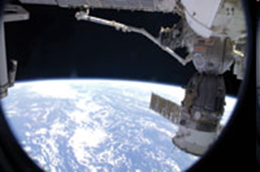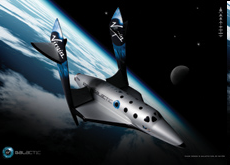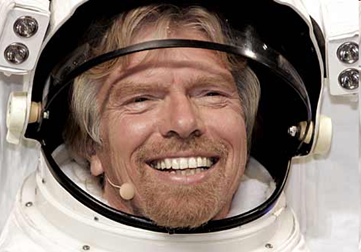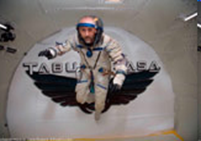Cover Story
Wanted: an Emirati space tourist
ANY Emirati with $35 million to spare is being encouraged by Space Adventures to contact the orbital space flight company to join them on a mission to the International Space Station (ISS).
CEO and president of Space Adventures Eric Anderson, who was in Dubai for the recent WTTC Summit, told TTN’s in an exclusive interview that the company would particularly welcome an Emirati recruit to go orbital.
“The kind of astronaut I’m looking for is someone who would go into orbit – spend two weeks on the International Space Station,” said Anderson.
“They would have to have a reasonable level of fitness; they will have to find a little bit of time in their schedule because there are about 12 to 14 weeks of training required.”
Space Adventures is targeting private individuals, business people, and has spoken to organisations and sectors of the government while here. “We are just starting discussions about it now,” said Anderson.
So far the company has had five private citizens visit the ISS, and the sixth, video game programmer and designer and Texas resident Richard Garriott, is due to take off from the steppes of the Kazakhstan space port on October 12.
“Garriott is unique as he is going to be the world’s second generation astronaut - his father is Owen Garriott is a former NASA astronaut,” he said.
Although the focus of the company is on orbital flights, they also offer sub-orbital flights costing around $200,000 for the blast. Rockets boost passengers 100 kilometres up to where space begins. After the engines shutdown, participants experience up to five minutes of continuous weightlessness, and can see Earth below.
Other space companies – Virgin Galactic for example, have signed up five Emiratis so far for sub-orbital flights. UAE national Adnan Al Maimani, a Space Adventures client, was the first to sign up and is on a waiting list for a sub-orbital flight.
“Sub-orbital is really the edge of an orbital flight. We think that if someone is going to pay $200,000 for a few minutes on the edge of space, we would love to see more people doing it. If someone is keen to go that far they possibly really want to go to the space station. It’s a teaser. So we are very supportive of sub orbital flights and we don’t really think of others as opposition,” Anderson said.
Space Adventures recently acquired another company called Zero Gravity. “We have come to realise over the last couple of years that this is the best space experience for the rest of us, so to speak. The Zero Gravity is a $4,000 per person space experience. It is not a space flight per se, but it is a two hour flight in a specially outfitted Boeing 727 during which participants have short periods of weightlessness,” he said.
“Zero gravity flights are really a much better option than sub-orbital because you get more weightlessness and you are in an FAA approved aircraft. It is also a lot less expensive.”
Another advantage of zero gravity flights was that these fly out of regular airports anywhere in the world. So what if we want to bring it to Dubai?
“Absolutely, we could bring it right here. We would have to have a group of committed customers before we did that, but we may well do that at some point,” he said.
The United States, Russia, Japan, Canada and Europe share the ISS international project. Construction started in November 1998, and is scheduled for completion in 2010. It orbits at an average altitude of 354 kilometres at an inclination of 51.6 degrees to the equator and at 17,000 miles an hour.
by Cheryl Mandy













